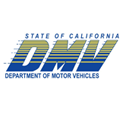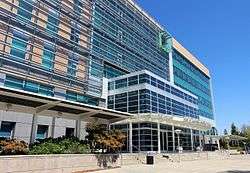California Department of Motor Vehicles

The California Department of Motor Vehicles (DMV) is the state agency that registers motor vehicles and boats and issues driver's licenses in the U.S. state of California. It regulates new car dealers (through the New Motor Vehicle Board), commercial cargo carriers, private driving schools, and private traffic schools. The DMV works with the Superior Courts of California to promptly record convictions against drivers' licenses and subsequently suspends or revokes licenses when a driver accumulates too many convictions (as measured by a point-based system). It issues California license plates and driver's licenses. The DMV also issues identification cards to people who are ineligible for, or do not wish to have, a driver's license.
The DMV is part of the California State Transportation Agency. It is headquartered in Sacramento and operates local offices in nearly every part of the state. As of December 2011, the DMV employed over 8,800 people—36% at headquarters and 64% at 169 field offices (and various other locations). Also, as of December 2011, it maintained records for 26,913,515 persons, 30,320,613 driver's licenses and/or identification cards (there is overlap as some persons can and do hold both documents), and 31,802,483 vehicles.[1] As of 2010, California has 23,753,441 licensed drivers.[2]
History

In 1901, the California State Legislature authorized California cities and counties to issue licenses for operation of many types of wheeled vehicles within their boundaries, including bicycles and automobiles. From 1905 to 1913, the California Secretary of State was authorized to implement a uniform statewide registration and licensing system for motor vehicles. In 1913, the Department of Engineering (predecessor of Caltrans) became responsible for registrations, and the California State Treasurer became the custodian of vehicle records. Licenses for drivers of motor vehicles became mandatory in California on December 13, 1913.
The first Department of Motor Vehicles was established by the Vehicle Act of 1915, but was reduced to the Division of Motor Vehicles within the Department of Finance in 1921. Under the Vehicle Act of 1923, the Division was authorized to appoint inspectors and traffic officers to enforce the Act; these personnel were later spun off in 1947 into the Department of the California Highway Patrol. In 1929, the Division was transferred to the Department of Public Works (a descendant of the old Department of Engineering and an ancestor of Caltrans) and in 1931 DMV again became a full Department. The DMV maintains a cadre of approximately 200 armed sworn State peace officers classified criminal investigators for enforcement duties relating to vessel or motor vehicle theft, vehicle or hull identification number and odometer fraud, chop shops, counterfeit or fraudulent DMV documents. disabled parking permit placard misuse, identity theft, unlicensed vehicle dealer (curbstoner) & dismantler activity, out of state vehicle registration plate misuse to avoid California registration, internal employee investigations, etc.
The DMV began collecting a statewide Vehicle License Fee in 1936, in lieu of the personal property tax that individual cities and counties previously levied directly on motor vehicles regularly garaged within their borders (hence its nickname as the "in lieu tax").[3]
The nation's first modern "credit card style" driver's licenses were introduced by the California DMV in January 1991. The plastic-coated design featured innovations like digitized photos, color holograms, and magnetic information strips readable by law enforcement.[4]
In 2012, a bill introduced by California State Assemblyman Mike Gatto required the DMV to establish the California Legacy License Plate Program.[5] This program allows California residents to order replicas of California license plates produced in the 1950s, 1960s, and 1970s. The orginial intent was for older cars to get new plates that matched the plate colors that the DMV issued for that car when it was new. However, due to lack of applications, the program was opened to all cars. For a license plate style to enter production, it needed to receive 7,500 paid applications by the January 1st, 2015 deadline.[6] Only the 1960s style plate (yellow lettering on black background) received the required number of orders. The DMV began production of the 1960s style plates at Folsom State Prison in Summer 2015.[7]
See also
References
- ↑ "Statistics for Publication" Archived April 29, 2011, at the Wayback Machine., California Department of Motor Vehicles, Forecasting Unit, April 2012.
- ↑ "Licensed Drivers by Sex and Ratio to Population - 2010" Federal Highway Administration, December 2011.
- ↑ California v. Buzard, 382 U.S. 386 (1966). This case analyzed the nature of the VLF at length before holding that it was preempted by the federal law then known as the Soldiers' and Sailors' Civil Relief Act of 1940 (now known as the Servicemembers Civil Relief Act) with respect to nonresident members of the federal military.
- ↑ Laski, Beth (January 16, 1991). "California DMV unveils high-tech license". The San Bernardino County Sun. San Bernardino, CA. Retrieved November 29, 2016 – via Newspapers.com.

- ↑ "AB-1658 Vehicles: specialized license plates.". 2011–2012.
- ↑ "CA Legacy Plates".
- ↑ "Muscle up: California reissues classic black license plates". June 23, 2015.